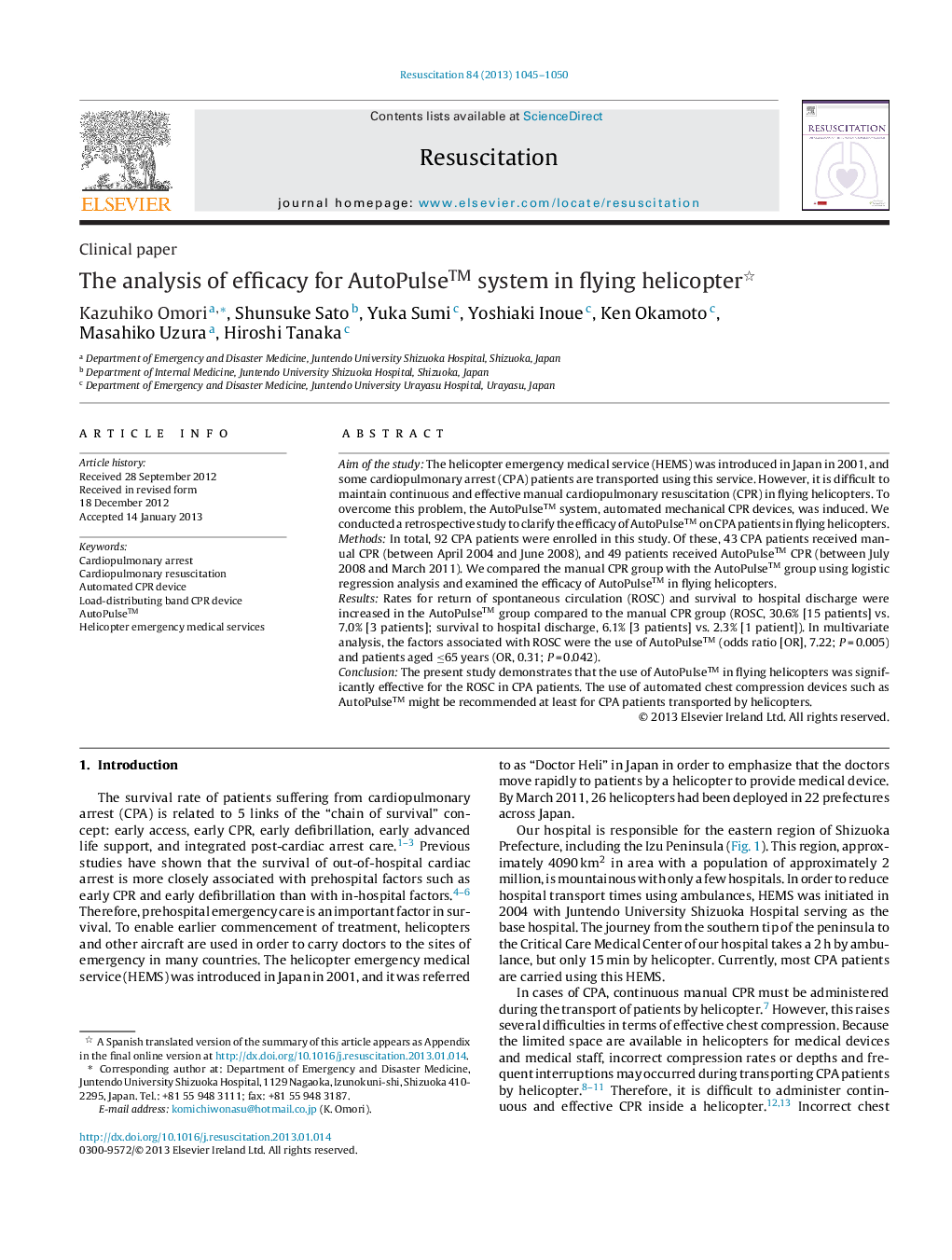| Article ID | Journal | Published Year | Pages | File Type |
|---|---|---|---|---|
| 3008244 | Resuscitation | 2013 | 6 Pages |
Aim of the studyThe helicopter emergency medical service (HEMS) was introduced in Japan in 2001, and some cardiopulmonary arrest (CPA) patients are transported using this service. However, it is difficult to maintain continuous and effective manual cardiopulmonary resuscitation (CPR) in flying helicopters. To overcome this problem, the AutoPulse™ system, automated mechanical CPR devices, was induced. We conducted a retrospective study to clarify the efficacy of AutoPulse™ on CPA patients in flying helicopters.MethodsIn total, 92 CPA patients were enrolled in this study. Of these, 43 CPA patients received manual CPR (between April 2004 and June 2008), and 49 patients received AutoPulse™ CPR (between July 2008 and March 2011). We compared the manual CPR group with the AutoPulse™ group using logistic regression analysis and examined the efficacy of AutoPulse™ in flying helicopters.ResultsRates for return of spontaneous circulation (ROSC) and survival to hospital discharge were increased in the AutoPulse™ group compared to the manual CPR group (ROSC, 30.6% [15 patients] vs. 7.0% [3 patients]; survival to hospital discharge, 6.1% [3 patients] vs. 2.3% [1 patient]). In multivariate analysis, the factors associated with ROSC were the use of AutoPulse™ (odds ratio [OR], 7.22; P = 0.005) and patients aged ≤65 years (OR, 0.31; P = 0.042).ConclusionThe present study demonstrates that the use of AutoPulse™ in flying helicopters was significantly effective for the ROSC in CPA patients. The use of automated chest compression devices such as AutoPulse™ might be recommended at least for CPA patients transported by helicopters.
